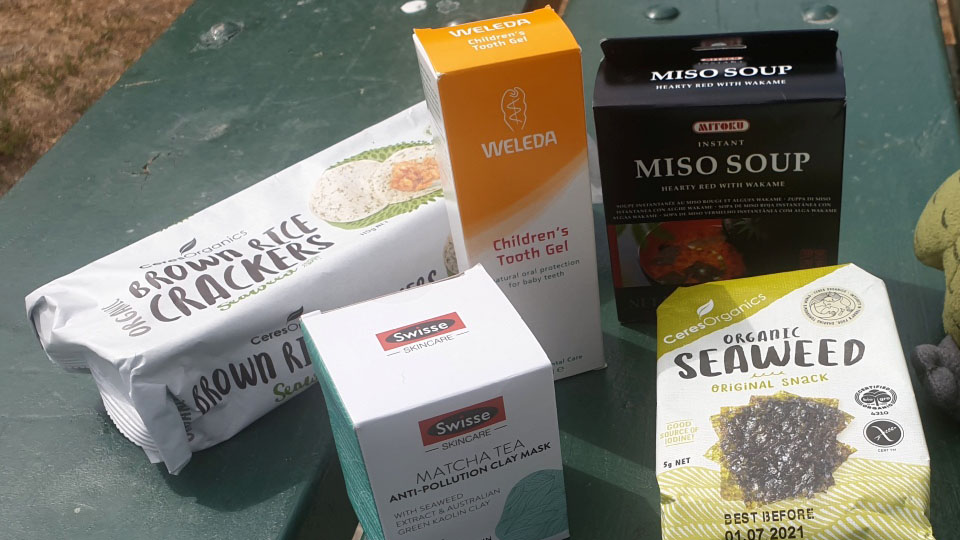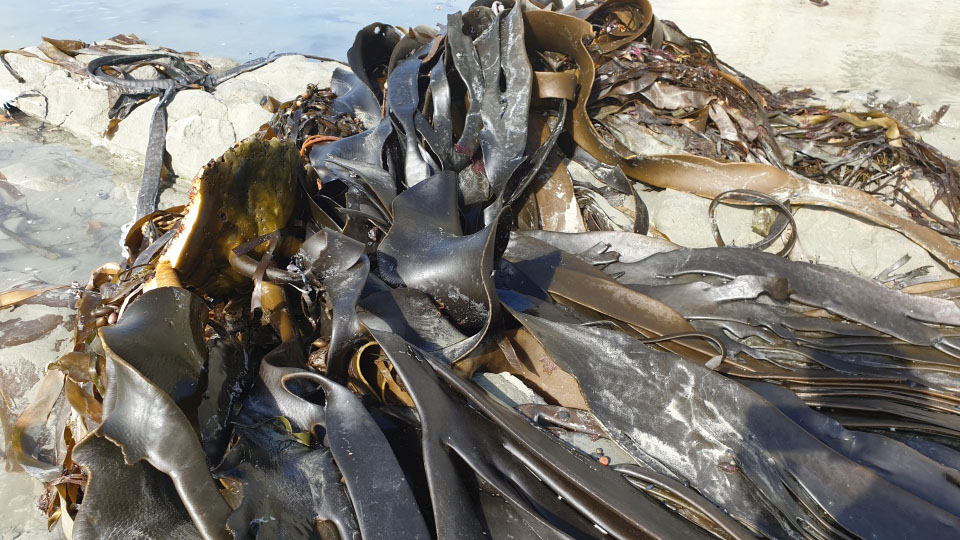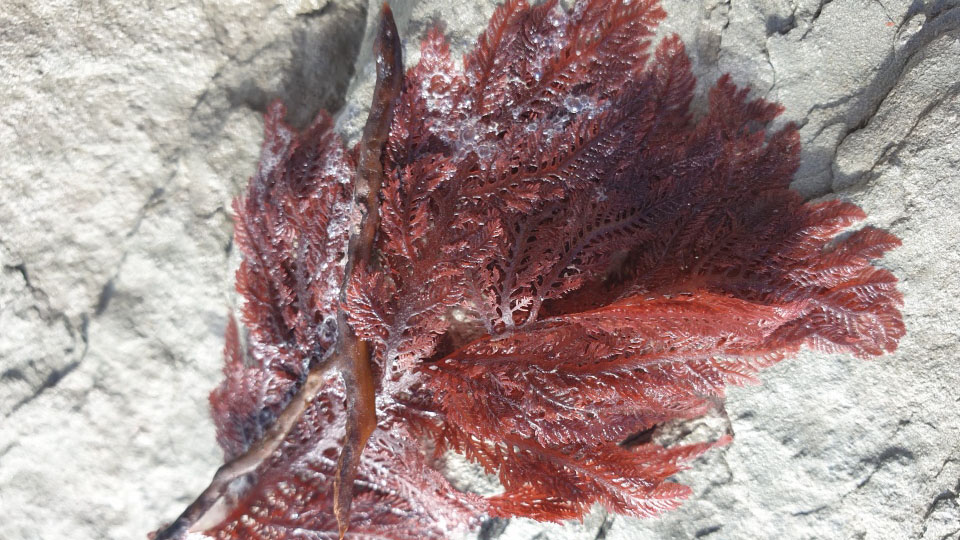People have been eating and using rimurimu for thousands of years, and it’s still super popular today! Seaweed shows up in food and tons of products, including cosmetics. Around the world, especially in Asia, seaweed is an important part of people’s diets.

Seaweed is found in many products. Source: LEARNZ.
Māori traditions
In Aotearoa New Zealand, Māori have deep connections to rimurimu. They use certain red and green seaweeds as food, especially karengo. Packed with protein, vitamins, and iodine, karengo is a powerhouse food that is especially valuable in winter. Māori would collect it from the rocks, dry it, and then cook it by boiling or frying.
Māori also have creative uses for rimurapa, or bull kelp. They roast parts of it for food, turn the stalks into musical instruments, and even use kelp blades to make pōhā – natural kelp storage bags for preserving food. They inflate the kelp in summer, dry it out, then use it to pack tītī (mutton-birds) and cover them in hot fat to keep the air out. This method can preserve the birds for up to six years!

Rimurapa has many uses, especially poha, natural storage bags. Source: LEARNZ.
Seaweed in products
Rimurimu isn’t just for eating. A jelly called agar is made from red seaweeds and used in labs to grow bacteria and in food preservation. Since 1943, New Zealand has been producing high-quality agar, mostly from seaweed harvested in the Wairarapa region.
Other types of rimurimu are used to make carrageenans and alginates, which help foods and cosmetics stay smooth. They’re used in things like ice cream, yogurt, chocolate, shampoo, and even toothpaste. Alginates stop ice cream from forming crystals, so it stays creamy!

Agar is made from red seaweeds and used in labs to grow bacteria and in food preservation. Source: Creative Commons.
Helping shellfish farms
Seaweed is also helpful in mussel farming. Baby mussels, or “spat,” are sometimes found attached to washed-up seaweed on Northland’s Ninety Mile Beach. These baby mussels are then transferred to mussel farms to grow. Even karengo is harvested and turned into a tasty seasoning!
Māori kupu | key words
rimurapa | bull kelp
ahumahi | industry
pāmu | farm
taketake | native
pōhā | kelp storage bag



